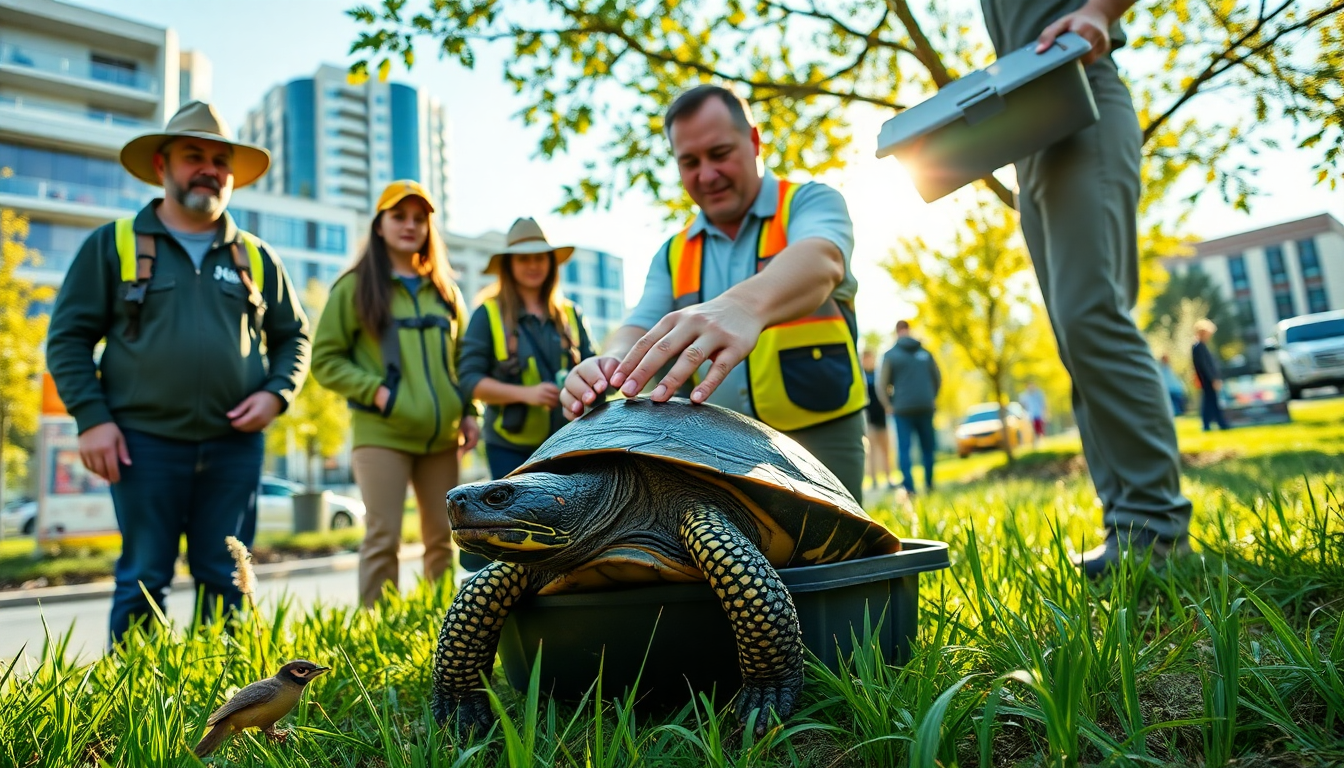Table of Contents
In a world that’s rapidly changing, the balance between urban development and wildlife conservation has never been more important. A recent event in Kelowna’s Wilden neighborhood shines a light on this issue, showcasing the community’s efforts to protect an endangered species: the western painted turtle. This heartwarming rescue and subsequent release back into its natural habitat serve as a powerful reminder of how vital community involvement is in safeguarding local wildlife amidst the pressures of urban expansion.
The Journey of the Western Painted Turtle
Imagine a turtle, injured and lost on a busy road. That’s exactly what happened to a western painted turtle that was rescued by the Interior Wildlife Rehabilitation Society. After suffering a cracked shell from a vehicle accident, this turtle’s story highlights the dangers wildlife face as urban infrastructure encroaches on their natural habitats. Eva Hartmann, the founder of the society, stressed the importance of returning the turtle to its original home, Still Pond. Why? To prevent the spread of diseases and ensure the turtle’s survival in a familiar environment.
As Hartmann put it, “It’s very important that they are only exposed to anything that may be in their home pond, where they are from.” This statement underscores just how crucial it is for the turtle to be reintroduced to its habitat for its recovery. The return to Still Pond wasn’t just a success story; it was a vital step in maintaining the ecological balance of the area.
Community Partnerships and Wildlife Safety
The relationship between wildlife and urban development is anything but straightforward. Johanna Eger, the marketing manager for Wilden, pointed out that turtles often find themselves darting across roads instead of using safe wildlife tunnels. “On either side of this road are wetlands, so they’re migrating between those ponds to lay their eggs,” Eger explained. This highlights the need for protective measures, especially during nesting season.
To tackle these challenges, the Interior Wildlife Society has partnered with local developers to create safer environments for both turtles and other wildlife. Jody Crumb, a dedicated volunteer, encourages the community to stay vigilant, particularly during the nesting periods. “If we just slow down, we can give them the chance to cross the road safely, lay their eggs, and make their way back in,” Crumb noted. This simple yet impactful reminder shows how mindful human behavior can make a significant difference in wildlife safety.
Conclusion: The Importance of Community Engagement
The successful release of the western painted turtle back into Still Pond is a powerful testament to the strength of community engagement and the necessity of preserving natural habitats in urban settings. As cities continue to grow, it’s essential for residents and developers to collaborate on initiatives that protect wildlife. By raising awareness and implementing strategies that reduce conflicts between urban development and wildlife, communities can help endangered species not just survive but truly thrive in their natural environments.
Reflecting on this incident, it’s clear that protecting wildlife isn’t just the job of conservation organizations; it requires collective action from everyone in the community. Together, through thoughtful planning and heightened awareness, we can create spaces where both humans and wildlife coexist harmoniously. Are you ready to be part of this vital mission?


